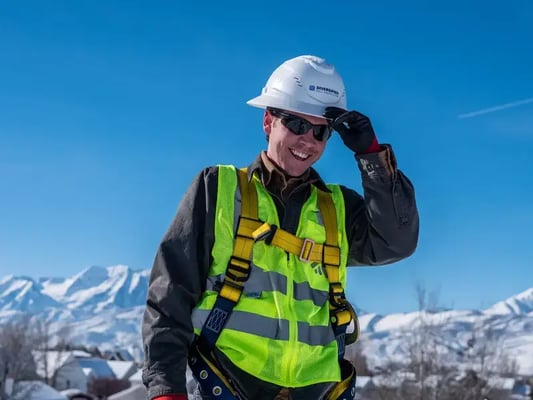
Understanding the OSHA General Duty Clause
In the vast landscape of workplace safety, finding the regulations that apply to your business can feel like putting together a complex puzzle. Yet, inside of the complexity is a crucial and universally applicable provision: OSHA’s General Duty Clause. This clause isn't just a set of words on paper. Instead, it's a guiding light that illuminates the path for industries, reminding them of their fundamental duty to provide a safe workplace for their employees. Let’s explore what it means and how it applies to you and your operations.
More Than Just Rules: Why OSHA’s General Duty Clause is a Call to Action
OSHA's General Duty Clause, or Section 5(a)(1) of the Occupational Safety and Health Act of 1970, states:
“Each employer shall furnish to each of his employees employment and a place of employment which are free from recognized hazards that are causing or are likely to cause death or serious physical harm to his employees.”
At first, it may seem simple, but when you dig deeper, it can be confusing. The main question is: What exactly is a recognized hazard? In simple terms, it's anything that people in the industry agree could be dangerous for workers. This agreement could come from standard industry practices, professional groups, or even from the company's own rules.
Applying the General Duty Clause
In the industrial world, the General Duty Clause isn't just a regulation; it's a way of thinking. Imagine it as an unseen safety net that fills the gaps that established regulations may have missed, making sure everyone stays safe. Let’s look at two examples of where the General Duty Clause could apply.
- Complex Machinery: A high-tech manufacturing facility might be equipped with state-of-the-art machines. While there could be OSHA guidelines on safety barriers or noise thresholds, specific ergonomic challenges tied to certain machines might fall outside these guidelines. What happens then? The General Duty Clause acts as the guiding principle, emphasizing the need to safeguard against even these uncharted challenges.
- Chemical Combinations: Take a chemical processing facility. OSHA's standards might dictate protocols for handling specific chemicals. But when two chemicals, not explicitly addressed, combine and pose a risk, who holds the responsibility? Once again, the General Duty Clause steps in, emphasizing the overarching duty of employers to mitigate such risks.
Modern workplaces evolve rapidly. In spaces where direct OSHA guidelines might not cater to every niche scenario, the General Duty Clause helps to ensure worker safety.
The General Duty Clause: Proactivity Over Reactivity
The age-old adage, "An ounce of prevention is worth a pound of cure," holds even more weight when considering the principles embedded in the General Duty Clause. While reacting to incidents after they occur might fix immediate concerns, it fails to address the root causes. The General Duty Clause urges industries to shift gears from this reactive approach to workplace safety towards a proactive one.
Instead of merely aligning with the existing OSHA standards, industries are encouraged to actively and consistently evaluate their environments, work methodologies, and tasks. In this way, the General Duty Clause isn't just a regulation; it's a call to action. It reinforces the idea that safety is not merely about adhering to rules; it's about wholeheartedly protecting workers.
In many industries, falls from heights pose the most significant safety threat to workers. While adhering to OSHA's fall protection rules is crucial, the General Duty Clause reminds us that true safety requires more than just ticking boxes. It encourages a continuous, proactive commitment to anticipating and addressing risks.
Diversified Fall Protection
A proactive approach toward fall protection might appear daunting. The question is, where do you begin? How do you identify hazards that aren't clearly outlined by the established OSHA regulations? Diversified Fall Protection can guide you on your journey:
- Inspections and Recertifications: Diversified Fall Protection leaves no stone unturned. Their meticulous inspection services identify unseen dangers and provide actionable insights to rectify them before they pose real threats.
- Tailored Safety Solutions: Recognizing the uniqueness of each workplace, Diversified Fall Protection offers customized solutions. Be it anchors for window washing, state-of-the-art trolley systems, or vertical lifelines, they curate systems that fit your unique operations.
- Documentation and Due Diligence: When it comes to regulatory compliance, documentation is critical. Diversified Fall Protection champions this by offering exhaustive documentation services. Their comprehensive records ensure you're always equipped with proof of your safety efforts, showcasing your commitment to creating a safe workplace.
Safety Beyond Set Standards
While OSHA provides a framework for safety, the General Duty Clause pushes industries to aim higher, turning safety from a routine task to a passionate mission. The challenge isn't just to comply but to proactively lead and fully commit to providing workers with the highest level of safety.
As the dynamics of workplaces evolve, ask yourself: Are you genuinely committed to safety? Diversified Fall Protection isn't just a vendor; they're your dedicated partner in this critical mission. Click here to learn more about how Diversified Fall Protection helps guarantee that every worker makes it home safely at the end of the day.
Schedule an assessment with Diversified Fall Protection
Contact Us to request a fall safety review

b-1.jpg?width=1368&height=1340&name=Rail%20(175)b-1.jpg)

